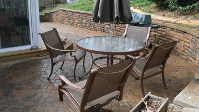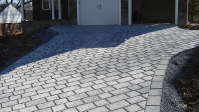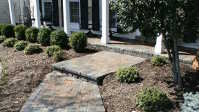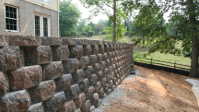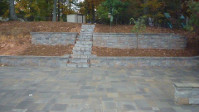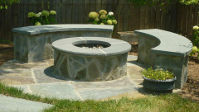If you have been considering how you would like to cut your home energy costs, you may wish to take a review at your house landscaping. This is a location you may not have even thought of. Did you understand energy-efficient house landscaping can minimize your family’s energy consumption for heating and cooling by as much as 25 percent. That’s incredible, isn’t it? Correct positioning of trees, shrubs, vines, yards, and hedges lets you customize the micro climate around your home to optimize shade throughout the summer season and decrease wind chill throughout the winter. Energy-efficient house landscaping is among the best financial investments you can make, since aside from its potential to increase the resale value of your home, it can create adequate savings to return your initial financial investment in less than 8 years. It is not unexpected then that more property owners than ever are implementing energy-conserving house landscaping ideas on their residential or commercial property. So where can we start with this interesting new landscaping experience? I hope the following details will be of help to you.
Develop a Home Landscaping Plan for Energy Efficiency
There are countless home landscaping methods for energy preservation, however, not all of them might be appropriate for your house and climate zone. Before you plant those evergreens in your backyard, make an evaluation of the comfort and energy imperfections of your current house landscaping. Things like the property’s micro climate, house area, and the existence of surrounding structures will affect your energy-efficient house landscaping strategy. Micro climate is the climate immediately surrounding your home, and together with the local environment, it helps figure out which plants and trees will thrive and offer the very best energy-saving advantage to your home landscaping. Your home’s place affects your dwelling’s direct exposure to the sun, wind, and water, consequently forming your home landscaping requirements. Nearby structures, walls, trees, and bodies of water can produce significant climatic impacts that would affect your house landscaping strategies. An extensive analysis of your home or business’s features allows you to devise an energy-efficient house landscaping plan that addresses your requirements and objectives.
Landscape to Maximize Shade
Effectively planned house landscaping can lower your air-conditioning costs in the summertime by supplying shade from the hot early morning and afternoon sun. Deciduous trees (trees that shed their leaves in winter) supply shade in the summertime when its leaves are in maturity and warm the home in winter by letting low-angle winter season sun filter through its bare branches. Home landscaping that takes full advantage of shade can reduce temperature inside the home by as much as 8 to 10 degrees Fahrenheit. Would you think of shading your air-conditioner through house landscaping since that increases the system’s performance. In addition, shading the ground and pavement with trees, shrubs, and groundcover plants can reduce surrounding air temperatures. Other heat-reducing house landscaping ideas include developing a trellis for climbing vines to shade an outdoor patio and planting a row of shrubs to shade a driveway.
Landscape for Wind Protection
House landscaping to divert the circulation of cold winds assists lower your house heating expenses in the winter. Trees, shrubs, bushes, walls and fences make reliable windbreaks for winter-protected house landscaping. You can achieve appropriate wind protection through home landscaping by planting evergreen trees and shrubs along the north and northwest locations of your house. Windbreaks can decrease wind speed for a range as much as 30 times its height, although maximum wind security happens at a distance of two to five times the mature height of windbreaks. For optimal wind security, make certain that the foliage density on the windward side of your home or business is 60 percent. A properly designed home landscaping offers energy savings year-round. Take pleasure in the heat of the winter sun by not planting evergreens too near the south side of your house. Shrubs, bushes, and vines planted near your house produce dead air areas that insulate your home in both winter and summer.
Need some more information about using landscaping elements to reduce energy consumption? Contact Premier Paving – we will be glad to discuss your options.

